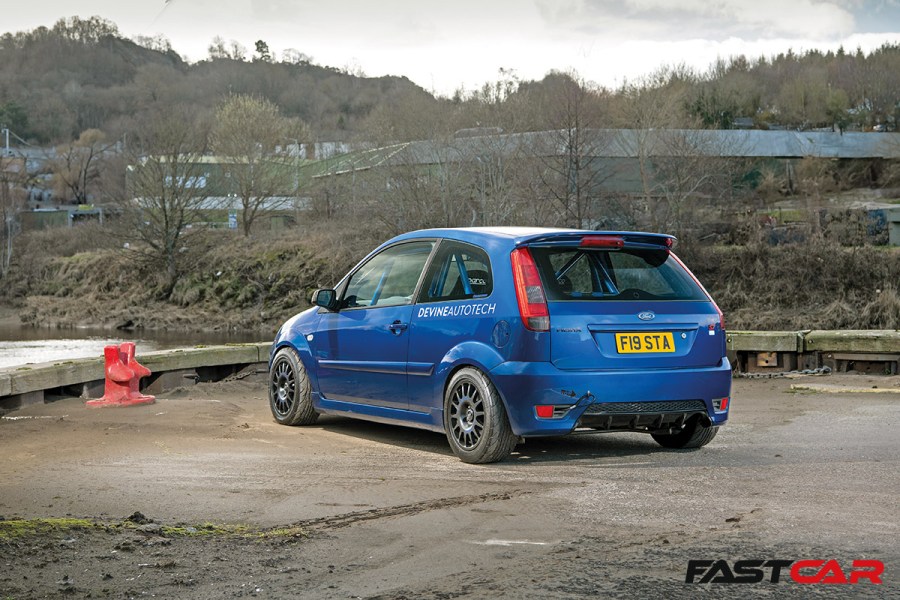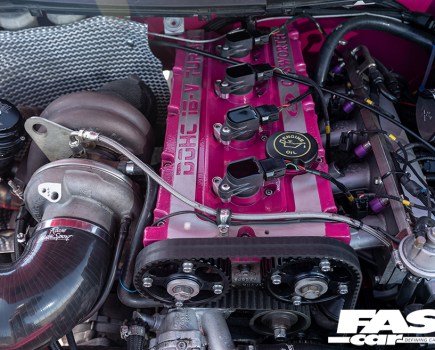With a fantastic chassis and a highly tuneable engine, the ST150 offers affordable yet formidable fast Ford fun. Here’s how to get the most from your Ford Fiesta ST Mk6 through tuning.
The Ford Fiesta ST Mk6 went back to fast Ford roots of sticking a big engine in a little car; then, stiffening up the chassis, and sending it down the road for some chuckable-yet-useable fun. It really was the XR2 reincarnated in the 2000s.
And, just like the XR2, the chassis underneath can easily cope with more power than the stock 2.0-litre Duratec’s 150bhp (hence the ST150 tag). Also, just like the XR2, tuning the engine gives significant improvements, either in screaming naturally-aspirated guise or gulping down wads of boost from a forced-induction conversion. But, because technology improves over time, the rewards on offer from a well-tuned ST150 far outweigh anything Ford’s earlier hot hatches could ever hope to muster.
Over the years we’ve seen plenty of fast-road conversion with around 200bhp combined with sensible chassis and braking upgrades. In more recent times, more ST owners have turned to adding boost to give some quite crazy power figures for a little Fiesta, initially with bolt-on supercharger kits, but latterly with full-blown big-turbo installations. That’s before we mention the abundance of engine swapped cars out there. And, of course, the Mk6 ST has always been capable on track, and we’ve seen plenty of track and full-on race cars embarrass much more powerful machinery on circuits thanks to an uncompromising and incredibly nimble chassis setup.
Or, like most people, you could combine your perfect blend of all of the above to create an ST that is unique, fits your needs and reflects your personality perfectly. Here’s our comprehensive guide to tuning the Ford Fiesta ST Mk6.
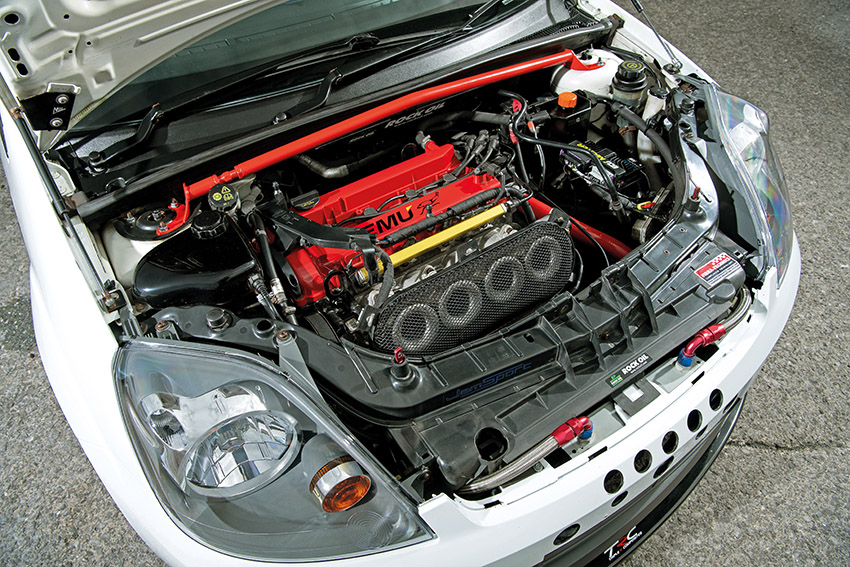
Ford Fiesta ST Mk6 Engine tuning
The ST’s 2.0-litre Duratec is a robust engine, and as long as you keep an eye on the oil levels regularly (it does like a drink) you can get stuck in straight away with the upgrades. If you want to be sensible, the first upgrade should really be a power steering relocation kit; it won’t gain you any power or improve performance but will stop the original setup spitting its PAS fluid all over the engine bay at high revs. And when you start tuning, you’ll want higher revs. Some tuners recommend an oil cooler upgrade for similar reasons.
When the car was new, Mountune offered warranty-friendly performance packages in the shape of MP165 and MP185 tuning kits. Complete kits are no longer available, but some of the key components (such as the air filter kit) are. That’s your starting point when tuning the MK6 Fiesta ST: engine breathing. The original airbox is an awkward and unsightly beast, not to mention restrictive. Bin that in favour of a K&N 57i kit, ITG foam induction kit, or the Mountune cold air induction system, and you’ll free up some grunt immediately, but more importantly, lay the foundations for things to come.
With fresh air coming in, it’s then time to focus on getting the exhaust gases out. Cat-back exhaust systems give added audible appeal, but for more meaningful gains, consider a sports cat from Scorpion, Piper or Milltek or even a decat if you intend to use the car off-road.
Add a suitable remap to the mix and you can expect to see around 165-to-170bhp – plus a much more enthusiastic driving experience – from these simple upgrades.
Camshafts
The next step is to add a set of fast-road cams as Mountune did with the MP185 kit. A tried-and-tested profile is the Cosworth 200-spec camshaft kit; fit without the need to change valve springs, and will produce up to 200bhp with supporting mods. Other profiles from the likes of Newman Cams and Piper Cams are also available, as are double valve springs for cam kits with very high lift.
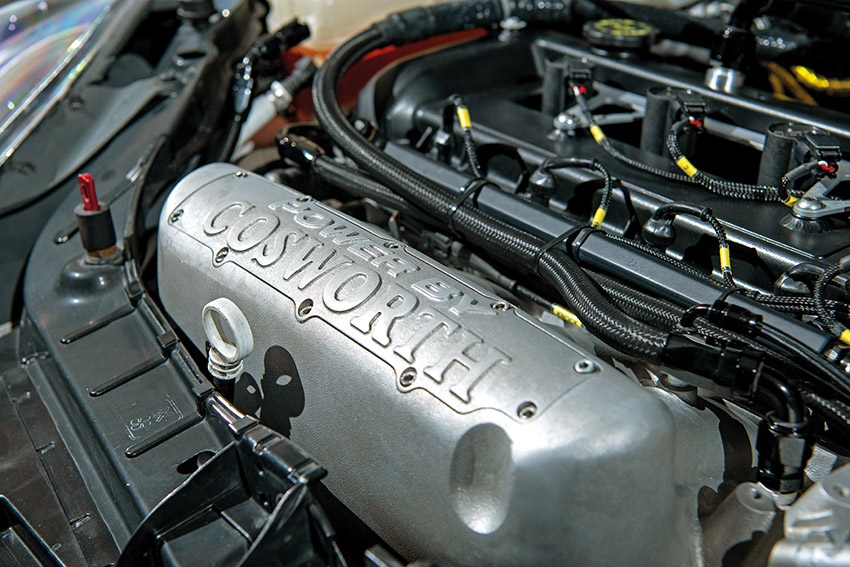
For cams like those, you’ll be looking at building a high-spec naturally-aspirated engine, and the next restrictions are the inlet manifold and throttle body. Mountune fitted a unique inlet on its top-spec MR200 tuning upgrade for the ST, as did Cosworth with the 200 kit. The former is no longer available new, but replica Cosworth items are available from tuners like Jamsport and SiCo Developments, while Pumaspeed offers its own similar version.
With a suitable remap, this will take power to around 190/200bhp. This power is the sweet-spot for fast-road applications. If you’re looking to retain some degree of originality, get off here.
Naturally-aspirated Tuning
If you’re looking for more power, you now face two distinct options. Stick with naturally-aspirated tuning or add some boost by way of a supercharger or turbocharger conversion.
Sticking with naturally-aspirated tuning, a set of throttle bodies comes next. Many of these require a stand-alone ECU, but there are kits available that work with the ST’s drive-by-wire throttle, working work with a remap on the stock ECU. You’ll see over 200bhp, but you’re into the realms of diminishing returns and every extra horsepower will become more expensive and time-consuming to extract. That said, with a 2.3-litre bottom end, ported and big-valve head, lairy cams and enormous throttle bodies, over 300bhp is possible. This is usually reserved for race cars where 2.0-litre naturally-aspirated regulations are extreme.
An easier way to reach similar power levels – and beyond – in a road car would be to switch to forced induction.
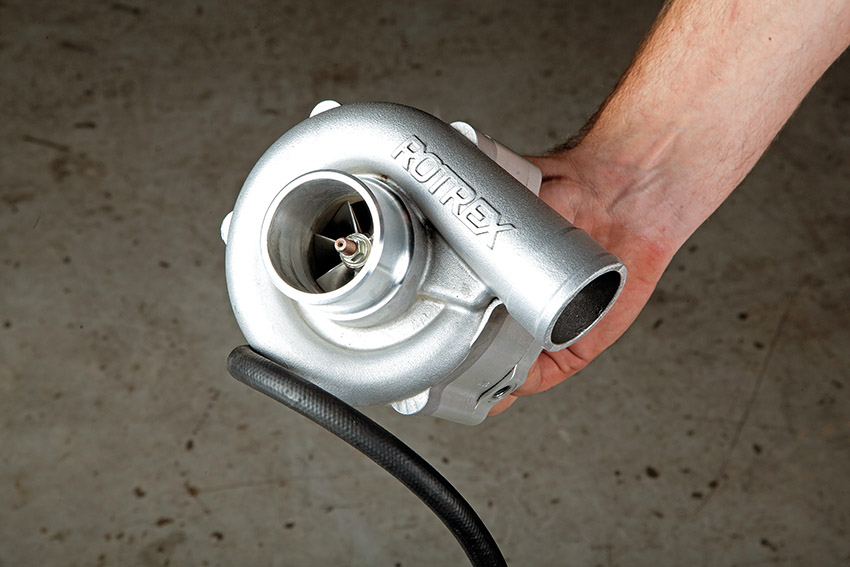
Ford Fiesta ST Mk6 forced induction tuning
While the ST’s Duratec engine will make for an excellent, high-revving, throttle-bodied howler capable of delivering over 300bhp without a boost gauge in sight, getting there is neither cheap nor easy. But converting to forced induction is surprisingly simpler than it sounds.
Jamsport launched several bolt-on supercharger kits for the Mk6 ST using centrifugal Rotrex units. A stock Duratec will take 300bhp on standard internals, plus because of the linear nature of boost delivery based on engine speed, these conversions even worked perfectly well on the factory ECU. A supercharger would work on an otherwise stock ST, but best results come when adding cams, exhaust systems and inlets. Even more is achievable when you throw in some uprated internals and a bigger blower.
Supercharger conversions retain that naturally-aspirated feeling behind the wheel, but for the biggest jump in performance you can’t beat a turbocharger. There are many different routes available, and it’s all custom-build stuff so not really an off-the-shelf kind of upgrade. As such, your engine builder or tuner can work with turbo choice, cam profiles, engine spec, and a whole host of other variables tailored to what you want. Big power is possible, and we’ve seen STs knocking on the door of 500bhp with well-spec’d turbo conversions.
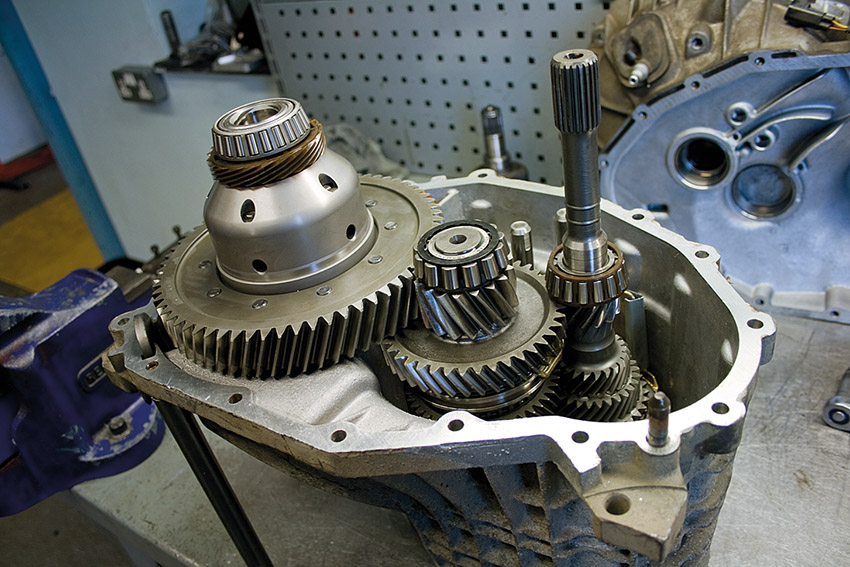
Ford Fiesta ST Mk6 Transmission tuning
The Mk6 Fiesta ST came fitted with Ford’s common IB5 gearbox. It may lack the sixth speed of more modern transmissions, but it’s so short-geared you don’t really need another. The stock IB5 might not be the slickest ‘box Ford ever fitted, but it will cope with most you’ll throw its way, especially if sticking with naturally-aspirated tuning.
The ST lacks a limited-slip differential, though. And while the IB5 ‘box is strong enough, the stock diff has been known to break. And when it breaks it usually disintegrates and takes out the entire gearbox. An uprated limited-slip diff like Quaife’s ATB is an ideal solution for most road cars, but track and race cars might prefer a more aggressive plated-type from Gripper or 3J Driveline.
The standard clutch and flywheel are adequate for most power increases up to around 200bhp (providing they’re in good health), but for anything more you’ll need an upgrade. Helix offers various options: uprated organic for road use, or heavy-duty paddle clutch kits for track and race.
For boosted cars, a beefier gearbox like the MTX-75 is essential. It’s not a straight swap, though, and will need modifications to the engine bay, along with a different clutch plate to suit the input shaft. You’ll need that limited-slip differential now too.
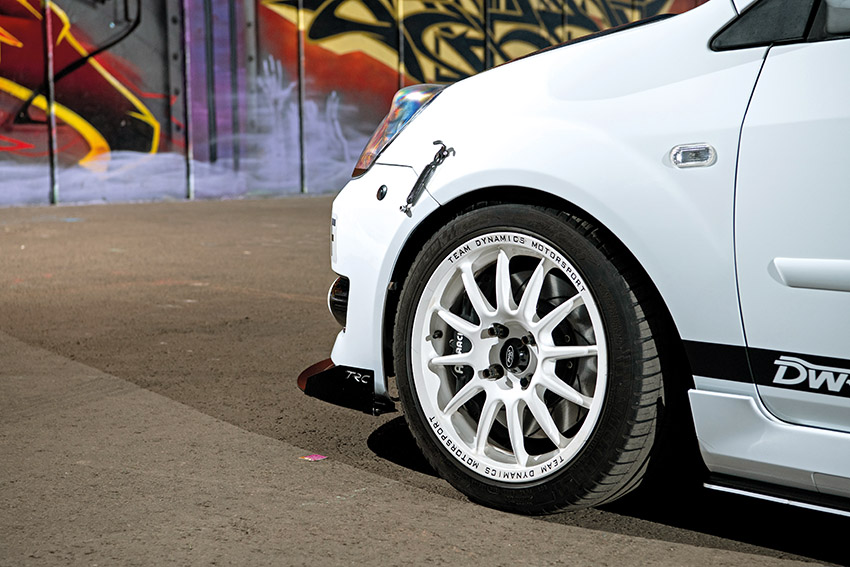
Ford Fiesta ST Mk6 suspension tuning
Developed by Ford’s TeamRS division at the Nürburgring, the Mk6 Fiesta ST has fantastic handling straight out of the box. It’s fun, playful and communicative; exactly as a hot hatch should be. It does sit too high, though.
You’re unlikely to see many STs with original springs these days, but if yours has then a set of lowering springs from Eibach are the answer; the lower stance not only looks better but it helps performance a little too. The best option is to couple the springs with matched updated dampers; Bilstein’s B12 kit has long been a favourite of ours and works exceptionally well on the Mk6 ST.
So well, in fact, for a fast-road car there isn’t any real need for coilovers – certainly not budget types that will hinder rather than help performance and ride quality. If you’re a track fan you may find that the adjustable settings and stiffer spring rates of a set of a quality coilovers are helpful for perfecting the handling package; ASTs are said to be the best for the Mk6 ST. I’ve had first hand experience with ST’s coilover package for the Mk6 and found it to be a great balance between road and track use without breaking the bank.
Polyurethane bush upgrades from SuperPro or Powerflex are wise investments to replace worn rubber units and stiffen the chassis. Add a performance rear anti-roll bar from Whiteline, and rear axle spacers at the same time, and you’ll have a decent little setup.
Dedicated track and race cars have the option of full roll cages, motorsport-spec rose-jointed suspension components to really stiffen things up, but often are too much of a compromise for any road car. Air ride has been used to great effect on show cars too.
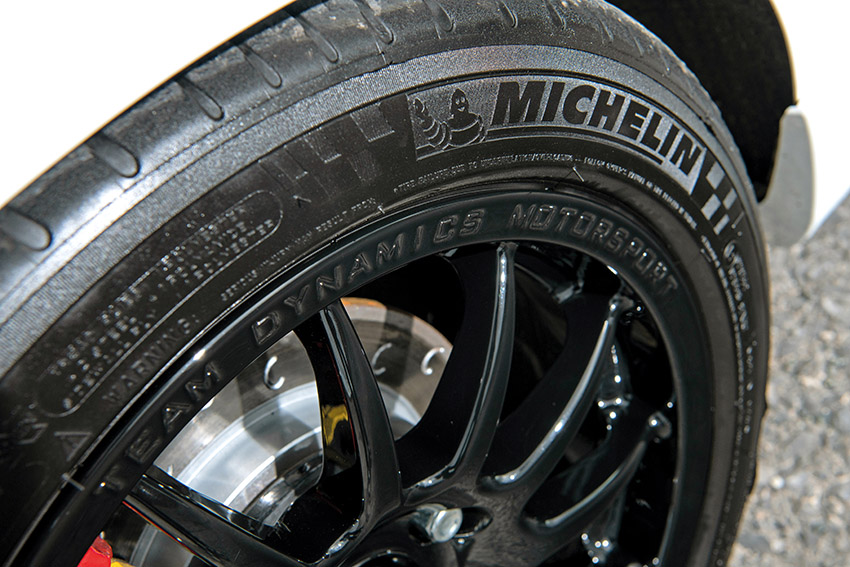
Ford Fiesta ST Mk6 brake tuning
Don’t think the seemingly small diameter 258mm front brakes are no good; when combined with decent fast-road compound brake pads, uprated discs, and braided lines they’re perfectly adequate for fast road use. In fact, the Fiesta ST Championship used to run them, so they are proven to work on track too.
There is a cheap and easy upgrade, though: fitting Focus ST170 300mm discs with Mk3 Mondeo callipers. This is a fantastic upgrade that makes a notable difference on a very small budget – they work even better with uprated discs, pads and lines.
Another in-house upgrade is to use the Brembo four-pot callipers from a Mk1 Focus RS. You’ll need suitable brackets, but they’ll clear the stock 17in rims when you add a set of wheel spacers.
Perhaps the best option, though, is a proper aftermarket big brake kit. There’s plenty of options from the usual suspects such as AP Racing, K-Sport and Hi-Spec, offering various diameters; and that’s crucial because for a track car you’ll want to drop an inch or two on wheel size to optimise handling.
At the rear, there’s no need for anything fancy. Simple disc and pad upgrades are effective, but if you want bigger discs, then fitting the ST170’s carriers to the Fiesta callipers allows you to run 270mm rears within the stock wheels.
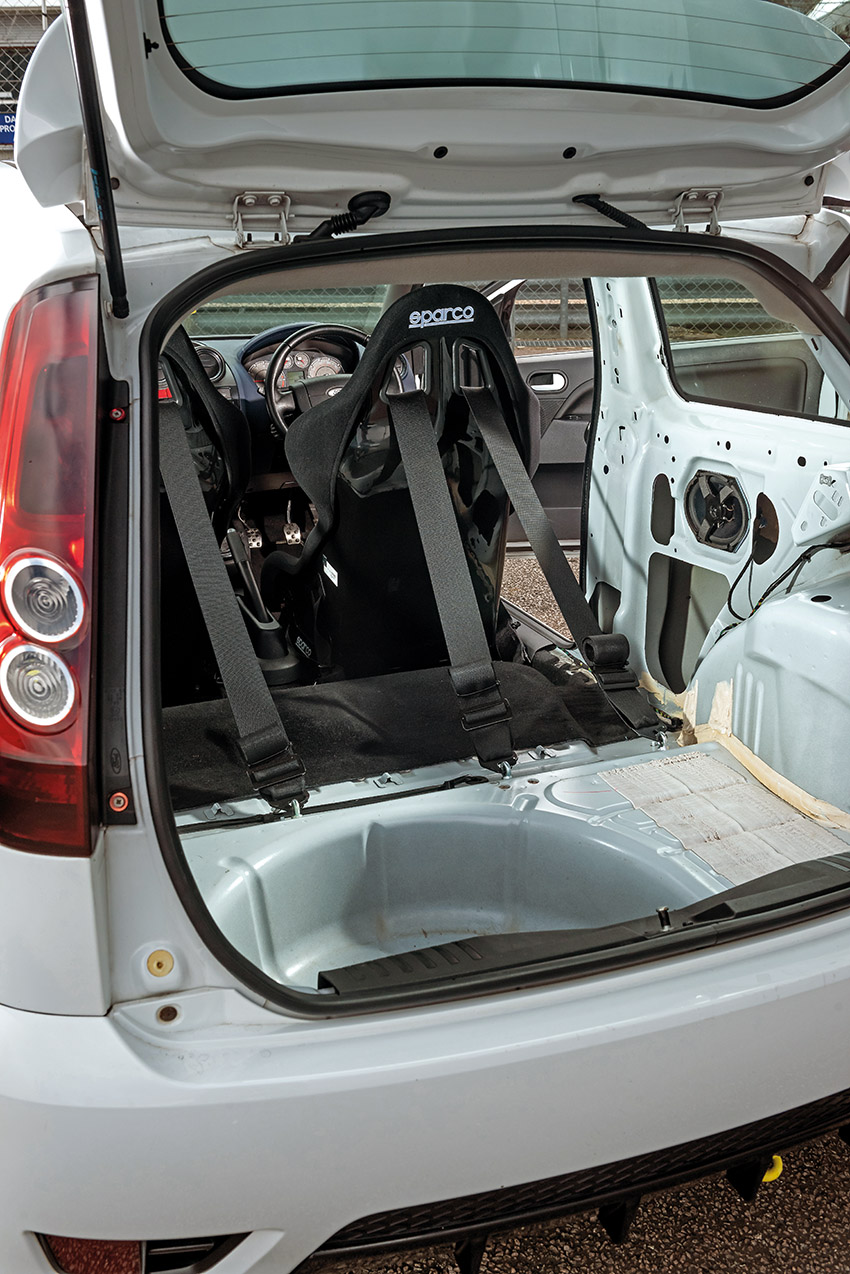
Interior
The stock half-leather ST seats are comfy and supportive enough for day-to-day use, but for enthusiastic driving and the odd track day you’ll want something that can hold you in place a little better. Mountune fitted a set of Recaro Sportster CS seats (the same as found in the Mk2 Focus RS) to the demo car back in the day (which we later robbed for our own project ST) and they were perfect; comfy enough to use on long journeys, but more than supportive enough for fast road thrills and a spot of track day fun. These, with the rear seats deleted and maybe a half-cage, will give an excellent clubsport vibe that many owners are looking for.
But they are expensive. And seemingly fitted to every modified Ford these days. So, for something a little different, one of the reclining bucket seats from specialists like Corbeau could be the answer. Especially as these allow the use of performance four-point harnesses when on track, or the factory three-point seatbelt for comfort and practicality on the road. Dedicated track and race cars will look to lightweight carbon/Kevlar FIA-approved race seats and matching harnesses.

Wheels & Tyres for the Mk6 Fiesta ST
The stock 17in multi-spokes were funky when the ST launched, but they do look a little dated today. And they’re heavy. Very heavy.
In a test Fast Ford conducted a few years ago we weighed the stock alloys and tyres at a whopping 20.87kg each. In the same test, we weighed a similarly sized set of Team Dynamics Pro Race 1.2s with the same tyres, and they tipped the scales at 17.6kg. That’s a 12kg reduction. And they say that 1kg of unsprung weight is worth 4kg of chassis weight, which means that’s the same as removing a massive 48kg!
So, the first thing is to ditch the stock alloys for something lighter. Many cast alloys offer significant weight savings over stock, but forged alloys will give the biggest gains.
It’s also the perfect opportunity to play around with offsets and increase width to fit a fatter tyre. Most road cars stick with 17s or drop to 16s, but most dedicated track and race cars go even smaller to 15in diameter wheels as this gives the best handling characteristics on the Mk6.
As for tyres, Toyo’s R888R is a firm favourite for track use, but any quality tyre will do. Just don’t fit budget rubber and undo all that excellent work on the chassis and upgrades.
Check out our guide to best aftermarket wheels.
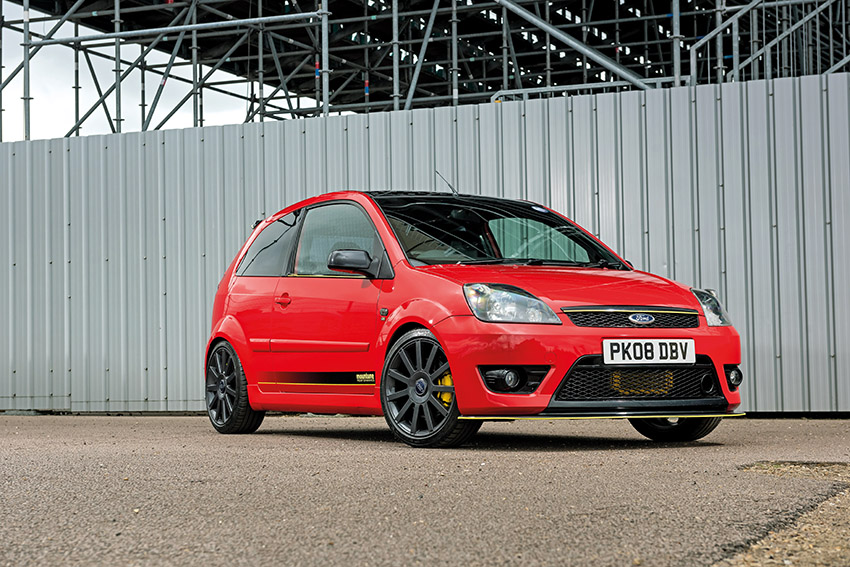
Ford Fiesta ST Mk6 styling upgrades
The funky styling and chunky arches on the Mk6 Fiesta have something of a retro appeal these days. Despite the Mk6 Fiesta only being a teenager, car designs have changed so much through the 2010s and into the 2020s that the ST has a decidedly old-school feel to its aesthetics. There’s no need to improve on what Ford gave us, other than maybe removing any twin stripes if they were fitted, as they do look dated by modern standards. Lairy kits and massive rear wings are all available, of course, but a more subtle approach with a lowline kit and front splitter is preferred by many.
Looking for Mk6 Fiesta ST Parts?
The Mk6 Fiesta ST is a right little ripper, but to unlock its full potential, you’ve gotta mod smart. That’s where ifndautoparts.com is set to revolutionise the tuning game. It’s packed with go-fast goodies—induction kits, upgraded intercoolers, ECU bits—all from verified sellers who live and breathe this stuff. No guessing games. Just a proper stash of Fiesta-focused parts to help you build a backroad blaster or a track-day terror. If you want real performance, start with real parts. Check out how ifndautoparts works and give it a go yourself.
See Mk6 Fiestas at Ford Fair & Ford Fest in 2025
If you’ve got to this point in our Mk6 Fiesta ST tuning guide then the chances are you love a modified Ford. The good news for you is that we host both Ford Fair and Ford Fest, two of the best Ford shows around. We also happen to host Trax at Silverstone, too, which means you’ll get to mix it up with other marques too. Be sure to check out the Fast Car event series for more information.

